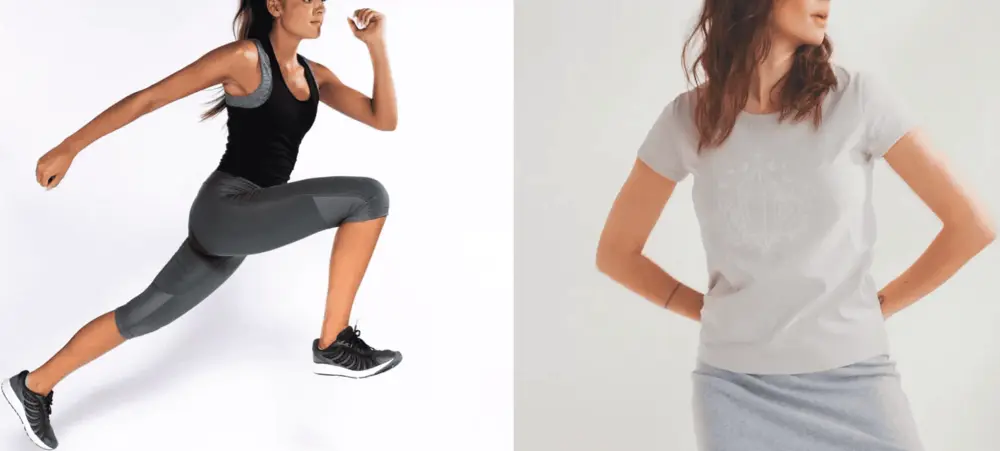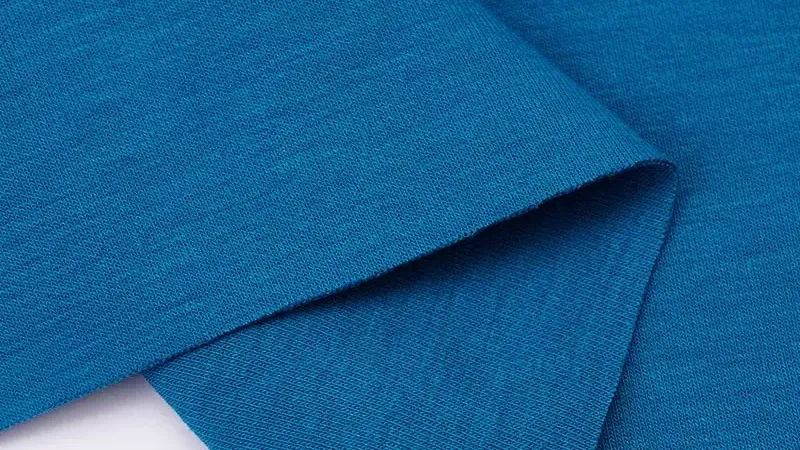Single Jersey Fabric vs. Interlock Fabric: Key Differences
Oct 23, 2024
On this page
When it comes to selecting fabrics for clothing, upholstery, or other textile applications, understanding the distinctions between various types is crucial. Two commonly used knit fabrics, produced using a knitting machine, are single jersey and interlock. While they may appear similar at first glance, their properties, uses, and manufacturing processes set them apart. This article explores the characteristics of single jersey and interlock fabrics, how they are made, their common applications, and tips for identifying each type.
Single jersey fabric is a type of knit fabric created using a single set of yarns. It is characterized by its lightweight, stretchy, and breathable nature. The fabric is typically produced using a weft knitting technique, which results in a flat surface on one side and a looped texture on the reverse side. Single jersey is often made from cotton, polyester, or a blend of both materials, providing a soft feel that is comfortable against the skin.


Single jersey fabric has a good amount of stretch, making it ideal for garments that require flexibility, such as t-shirts and casual wear.
The open knit structure allows for excellent airflow, making it suitable for warmer weather.
Single jersey is typically lighter than interlock fabric, making it a popular choice for summer clothing.
It can be easily printed on and dyed, allowing for a wide range of design possibilities.
Interlock fabric is a type of knit fabric formed by two sets of yarns, resulting in a thicker, more stable material compared to single jersey. This fabric is knitted on a double knitting machine and is produced using weft knitting. It features a more complex structure that interlocks the two layers of knit, creating a smoother surface on both sides. Interlock fabric is commonly made from cotton, polyester, or blends, and is known for its durability and warmth.

Interlock fabric is thicker than single jersey, making it suitable for cooler climates and seasons.
The interlocking structure provides enhanced stability, preventing stretching and distortion during wear and washing.
Both sides of interlock fabric have a similar appearance, allowing for versatility in design.
Interlock fabric has a soft, smooth texture, making it comfortable for close-fitting garments.
The manufacturing processes for single jersey and interlock fabrics differ significantly due to their structural characteristics.
The process begins with selecting the appropriate yarn, typically cotton or a synthetic blend.
The yarn is fed into a circular knitting machine, which creates the fabric in a tubular form. The machine utilizes a single set of needles to produce the characteristic single jersey structure.
After knitting, the fabric is finished to enhance its properties. This may include processes like dyeing, printing, and treatments to improve softness or moisture-wicking capabilities.
Similar to single jersey, interlock fabric starts with selecting suitable yarns, often cotton or polyester.
Interlock fabric is created using a specialized knitting machine that employs two sets of needles. This process interlocks the yarns, producing a thicker fabric with a smooth surface on both sides.
Once knitted, interlock fabric undergoes finishing processes, including dyeing, printing, and treatments to enhance durability and softness.
Single jersey fabric is widely used in various applications, thanks to its lightweight and breathable properties. Common uses include:
Its softness and stretchability make it a popular choice for casual t-shirts.
The breathability and moisture-wicking capabilities make it ideal for athletic apparel.
Single jersey is often used in the production of comfortable underwear due to its soft texture.
The fabric's lightweight nature makes it perfect for relaxed clothing like pajamas and lounge sets.

Interlock fabric's thickness and stability make it suitable for different applications compared to single jersey. Common uses include:
The durability and stability of interlock fabric make it a popular choice for activewear and sports clothing.
Its softness and non-irritating texture are ideal for sensitive baby skin, making it a common choice for onesies and sleepwear.
Interlock fabric is often used in formal clothing, including dresses and blouses, due to its smooth finish and structure.
The added warmth of interlock fabric makes it suitable for colder weather garments, such as sweaters and jackets.

While both fabrics may look similar, there are several key characteristics that can help you distinguish between single jersey and interlock fabric:
Single jersey is generally thinner and lighter, while interlock fabric is thicker and more stable.
Single jersey has a more pronounced stretch, making it feel more flexible. Interlock fabric is stable with less stretch.
Single jersey has a flat surface on one side and a looped texture on the other. In contrast, interlock fabric features a smooth surface on both sides
Interlock fabric is reversible, with both sides looking similar. Single jersey has a distinct front and back.
Understanding the differences between single jersey and interlock fabrics is essential for making informed decisions in textile selection. Each fabric offers unique properties that cater to different needs and applications. Single jersey fabric, with its lightweight and breathable nature, is ideal for casual wear and sports apparel, while interlock fabric, known for its thickness and stability, is perfect for activewear and formal clothing. By knowing how to identify and differentiate between these fabrics, you can choose the right one for your next sewing project or purchase.
Next: Operation Instructions for Circular Knitting Machines
Previous: Jacquard Fabric: A Comprehensive Guide
About Us
We have been committed to manufacturing all types of circular knitting machines with great quality and reasonable price for a long time. Our professional team is highly specialized and problem-solving oriented. We put the most effort into meeting your knitting demands, achieving a win-win situation.
Categories
Useful Links